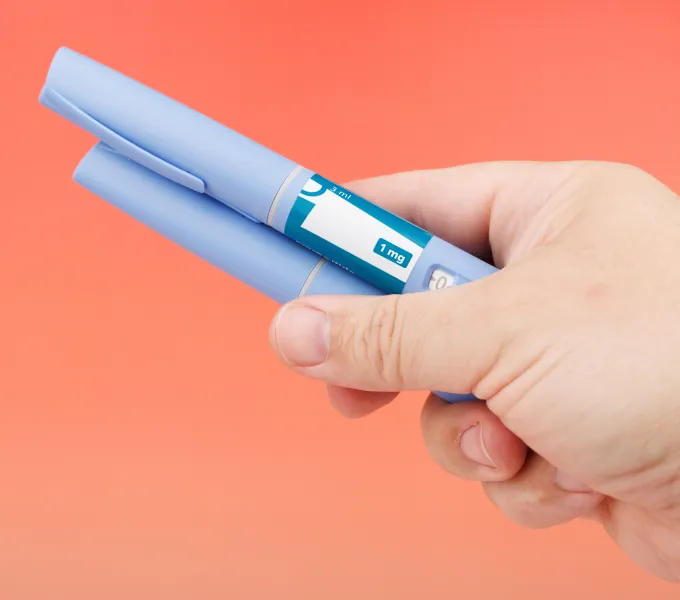
Your Pelvic Floor and Your Hormones: What’s the Connection?
Clinically reviewed by Liz Miracle, PT, MSPT, WCS.
From puberty to pregnancy and beyond, women and people assigned female at birth (AFAB), spend years getting acquainted with their hormone fluctuations.
Two of those hormones: estrogen and progesterone, are indispensable for our reproductive health. Estrogen plays key roles in breast development, menstruation, and pregnancy, while progesterone also supports menstruation and the early stages of pregnancy.
But did you know that these hormones are also essential for our overall pelvic floor health? And when our estrogen and progesterone levels drop, it puts us at risk for pelvic floor dysfunction? Considering that most women and those AFAB will experience low estrogen and low progesterone symptoms at some point in their lives, it’s worth exploring the connection between your hormones and your pelvic floor.
If you are experiencing hormone-related pelvic floor dysfunction, fear not: There is help out there, with several treatment options available, including pelvic floor physical therapy.
How do low estrogen and low progesterone impact the pelvic floor?
Since our pelvic floor muscles are critical for bladder, bowel, and sexual function, they need to be strong and elastic. But when estrogen and progesterone levels drop, which can occur during common hormonal fluctuation periods like breastfeeding or chestfeeding, perimenopause, menopause, and even cancer treatments, our pelvic floor pays the price.
Lowered hormone levels can result in weaker and less flexible pelvic floor muscles, which can then lead to any number of low estrogen and low progesterone symptoms like urinary incontinence, pelvic organ prolapse, and sexual dysfunction. These low hormone levels can also cause increased pelvic pain and discomfort.
What causes these hormonal imbalances?
Perimenopause
Perimenopause is the natural transition period to menopause, which is when your menstrual cycle ends. While the timeline varies for each person, perimenopause usually begins in your 40s (though symptoms can start in your mid-30s).
During perimenopause, estrogen and progesterone levels tend to drop, and this is punctuated by some menstrual cycles where you won’t ovulate (when the ovaries don’t release an egg). Those lowered estrogen levels cause a loss of lubrication and elasticity in vaginal tissues – as well as vaginal dryness. This can lead to painful sexual intercourse and urinary incontinence.
Menopause
Menopause marks the ending of your menstrual cycle. Once you’ve gone 12 consecutive months without a period, you are officially in menopause. Your ovaries have stopped producing reproductive hormones like estrogen and progesterone, and now, fat cells make most of your body’s estrogen.
There is also an increased risk of developing pelvic organ prolapse during menopause due to the weakened connective tissues in the pelvic floor.
Breastfeeding and Chestfeeding
It’s not just the natural aging process that can cause these low estrogen and low progesterone symptoms. Pregnancy and the postpartum period can bring on hormonal imbalances that affect the pelvic floor, especially if you are producing breast milk.
Although estrogen levels rise significantly during pregnancy, they then drop immediately after childbirth, which allows for an increase in prolactin (the hormone responsible for breast milk production). As your body continues to produce breast milk, your estrogen levels remain on the lower side. This can result in genitourinary syndrome of lactation, a condition where people experience vaginal dryness and a weakened pelvic floor.
Although there are treatments available, including lubricants, estrogen-based creams, and pelvic physical therapy, know that pelvic floor issues while producing breast milk are temporary. As you wean your baby, and milk production decreases, things should return to normal. But that’s no reason to wait on making an appointment with a pelvic floor physical therapist. If you’re in discomfort, help is available, even while you're still producing breast milk.
Cancer treatments
Cancer treatments like chemotherapy and hormonal therapy can trigger pelvic floor dysfunction due to their effects on estrogen levels. Hormonal therapy blocks estrogen, while chemotherapy can cause the ovaries to shut down, sending the patient into early menopause. These treatments can ultimately cause muscle weakness, scar tissue, nerve damage, tissue tightness, and inflammation. This can result in symptoms like incontinence, pelvic pain, constipation, and painful sex.
Radiation and surgery in the pelvic area also has the potential to cause pelvic floor dysfunction. If these treatments are paired with estrogen-suppressing therapies, patients may experience vaginal wall collapse or stenosis (a narrowing or tightening of the vaginal canal).
Testosterone therapy
It’s important to also note that it’s not only women who experience hormone-based pelvic floor concerns. Transgender men undergoing gender-affirming testosterone therapy do experience a high incidence of pelvic floor dysfunction, as well as a high occurrence of urinary symptoms including incontinence and sexual dysfunction.
When it comes to testosterone therapy, however, keep in mind that it’s all about balance: While too much testosterone can cause pelvic floor issues, too little (or the inability for the body to use the testosterone that is present) can cause problems in the pelvic floor as well. Studies have shown that people with vulvodynia, as well as menopausal symptoms can benefit from both androgen (aka testosterone) as well as estrogen treatments.
Treatment options for pelvic floor issues caused by hormonal imbalances
While it’s important to discuss any treatment plan with your healthcare provider or pelvic floor therapist, here are some potential options for achieving hormone harmony.
- Diet and lifestyle changes: Eating a healthy, plant-based diet, along with reducing stress, getting enough sleep, and moderate exercise can help increase your hormone levels.
- Hormone replacement therapy (HRT): This is a common treatment for people experiencing perimenopausal and postmenopausal symptoms. With HRT, patients take synthetic forms of estrogen and/or progesterone.
- Pelvic floor physical therapy: Physical therapy can help patients strengthen their pelvic floor muscles weakened by lowered hormone levels. Through PT, patients can help their pelvic floor muscles regain flexibility, as well as desensitize tissues that have grown painful from low hormones. Physical therapists can also counsel patients about symptom-easing products like vaginal lubricants or pessaries.
How can pelvic floor physical therapy help?
As we’ve established, hormonal imbalances cause pelvic floor muscles to weaken and lose their elasticity. This can potentially make you more vulnerable to conditions like bladder and bowel incontinence, discomfort during sexual intercourse, and pelvic organ prolapse. While there are hormonal therapies available – and they have had a positive impact on pelvic floor function – pelvic physical therapy can also make a difference by helping you to strengthen these depleted muscles.
If you’re experiencing pelvic floor issues caused by low estrogen and/or low progesterone, you don’t have to suffer in silence. Help is available for these treatable conditions, including symptom management plans. Ready to feel like yourself again? Book a visit with a pelvic floor expert.
Sources Cited:
- Robinson, Dudley et al. “The effect of hormones on the lower urinary tract.” Menopause international vol. 19,4 (2013): 155-62. doi:10.1177/1754045313511398
- Copas, P et al. “Estrogen, progesterone, and androgen receptor expression in levator ani muscle and fascia.” Journal of women's health & gender-based medicine vol. 10,8 (2001): 785-95. doi:10.1089/15246090152636541
- Reay Jones, N H J et al. “Pelvic connective tissue resilience decreases with vaginal delivery, menopause and uterine prolapse.” The British journal of surgery vol. 90,4 (2003): 466-72. doi:10.1002/bjs.4065
- Perelmuter, Sara et al. “Genitourinary syndrome of lactation: a new perspective on postpartum and lactation-related genitourinary symptoms.” Sexual medicine reviews vol. 12,3 (2024): 279-287. doi:10.1093/sxmrev/qeae034
- de Morais Siqueira, Thaís et al. “Vaginal stenosis in women with cervical or endometrial cancer after pelvic radiotherapy: a cross-sectional study of vaginal measurements, risk for sexual dysfunction and quality of life.” International urogynecology journal vol. 33,3 (2022): 637-649. doi:10.1007/s00192-021-04798-8
- da Silva, Lyvia Maria Bezerra et al. “Pelvic Floor Dysfunction in Transgender Men on Gender-affirming Hormone Therapy: A Descriptive Cross-sectional Study.” International urogynecology journal vol. 35,5 (2024): 1077-1084. doi:10.1007/s00192-024-05779-3
- Simon, James A. MD; Goldstein, Irwin MD; Kim, Noel N. PhD; Davis, Susan R. MBBS, PhD; Kellogg-Spadt, Susan PhD; Lowenstein, Lior MD; Pinkerton, JoAnn V. MD; Stuenkel, Cynthia A. MD; Traish, Abdulmaged M. PhD; Archer, David F. MD; Bachmann, Gloria MD; Goldstein, Andrew T. MD; Nappi, Rossella E. MD; Vignozzi, Linda MD. “The role of androgens in the treatment of genitourinary syndrome of menopause (GSM)”: International Society for the Study of Women's Sexual Health (ISSWSH) expert consensus panel review. Menopause 25(7):p 837-847, July 2018. | DOI: 10.1097/GME.0000000000001138
- Kugajeevan Vigneswaran, Haitham Hamoda. “Hormone replacement therapy – Current recommendations,” Best Practice & Research Clinical Obstetrics & Gynaecology, vol. 81, (2022): 8-21, ISSN 1521-6934, doi: 10.1016/j.bpobgyn.2021.12.001
- Bodner-Adler, Barbara et al. “Effectiveness of hormones in postmenopausal pelvic floor dysfunction-International Urogynecological Association research and development-committee opinion.” International urogynecology journal vol. 31,8 (2020): 1577-1582. doi:10.1007/s00192-019-04070-0




